Here we show prediction images for the polarized brightness (pB) of the corona. Traditionally, pB has been used to separate light scattered by the K-corona and the F-corona, making it the more scientifically useful quantity. The first image/movie on the left shows the brightness of polarized white light in the corona, processed with a Newkirk radial filter. This is a rough attempt at approximating what the human eye might see during the solar eclipse. The middle column shows a digital processing of these images to bring out certain features: The combination of log-scaling and unsharp masking brightens faint features while enhancing edges. On the right, a wavelet high pass filter sharpens fine scale features throughout the corona, showing streamer edges, bright loops, and non-radial features. Although the original images seem quite diffuse, these enhancements bring out the underlying complexity of the plasma and magnetic field distribution in the model.
Polarized Brightness
(Newkirk Filter)
Log Polarized Brightness
(Unsharp Masked)
Polarized Brightness
(Wavelet Filtered)
Scientific versions of these images, and the unprocessed (raw) data are provided below in FITS format. The FITS headers have the typical metadata used in solar imaging measurements.
Polarized Brightness
(Raw)
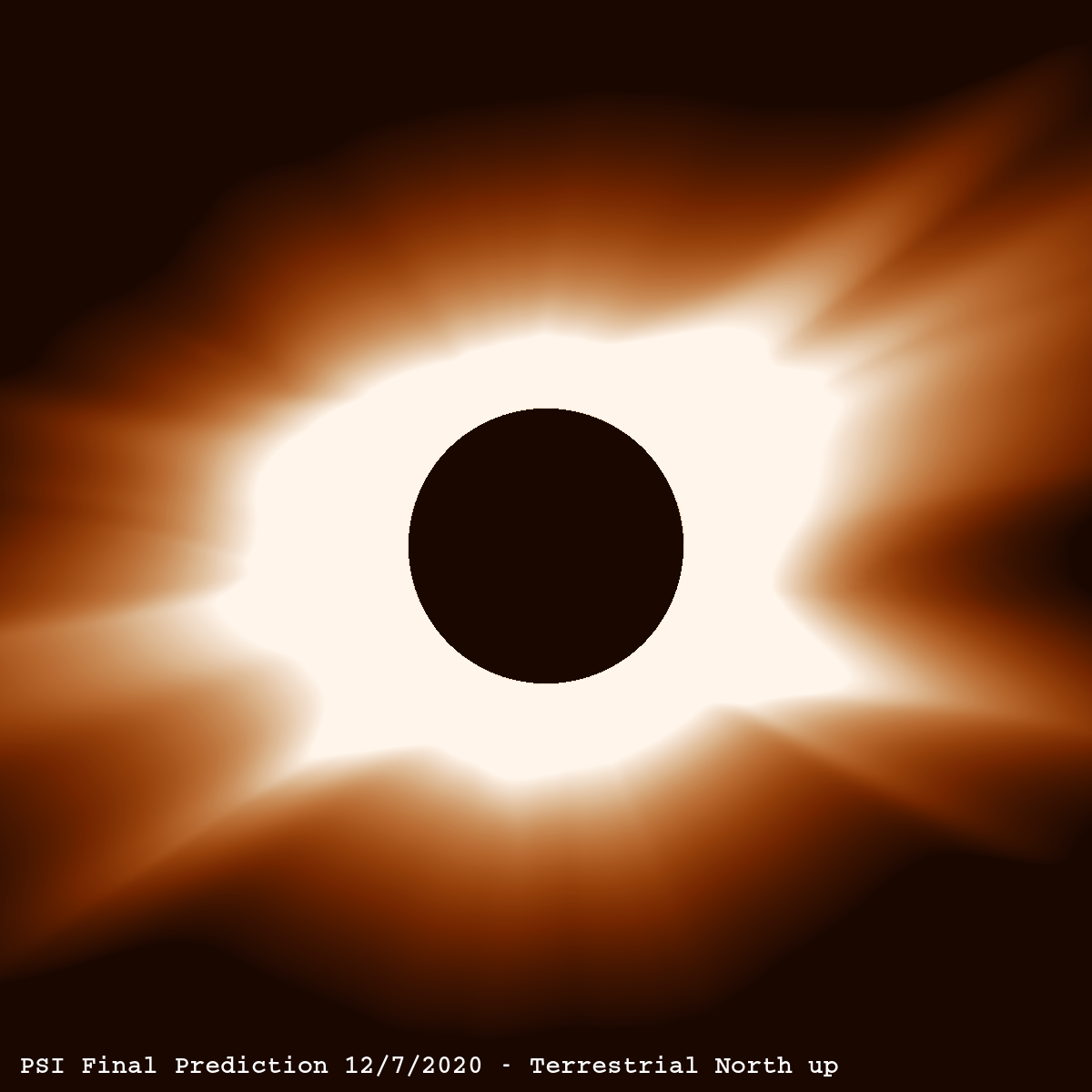
Polarized Brightness
(Newkirk Filter)
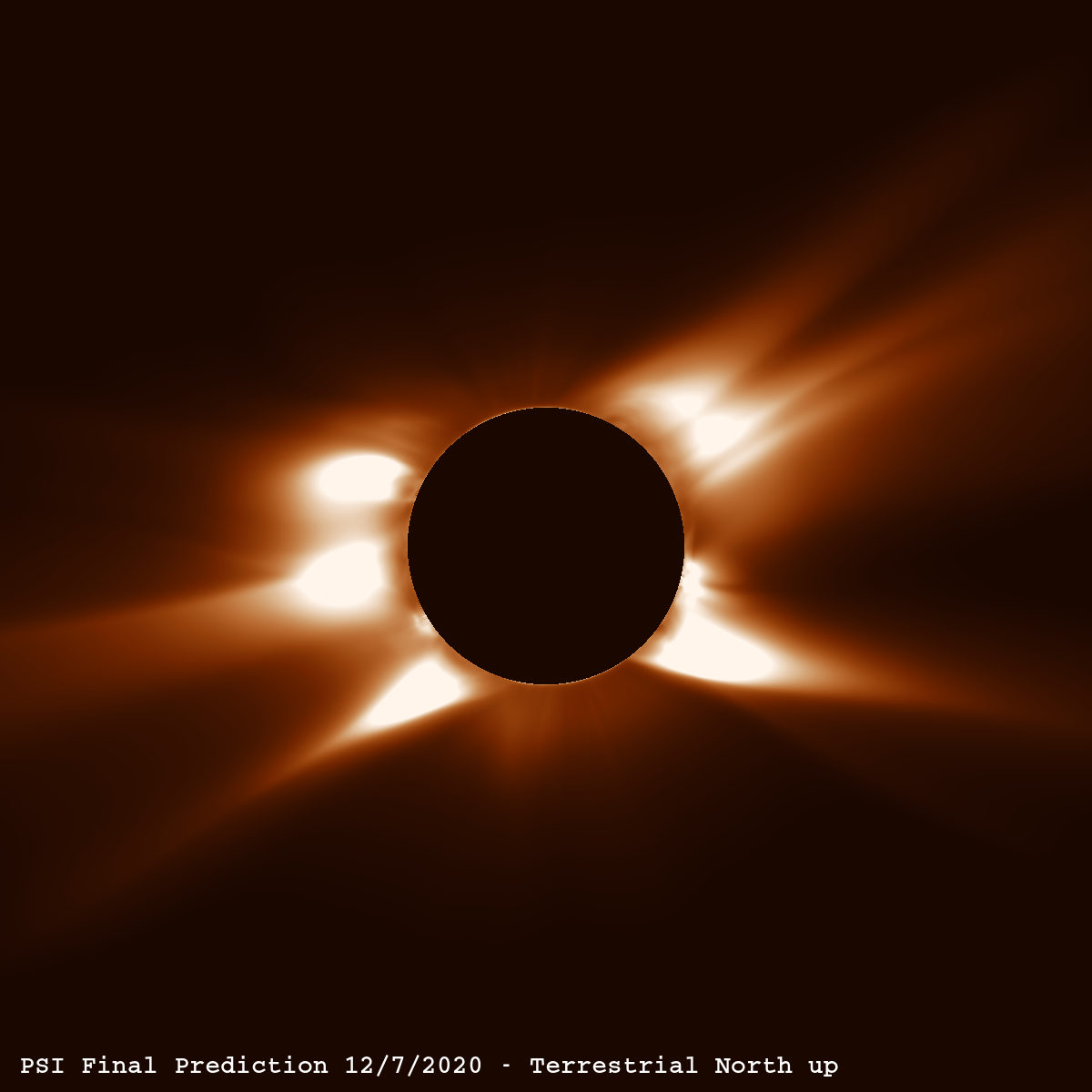
Log Polarized Brightness
(Unsharp Masked)
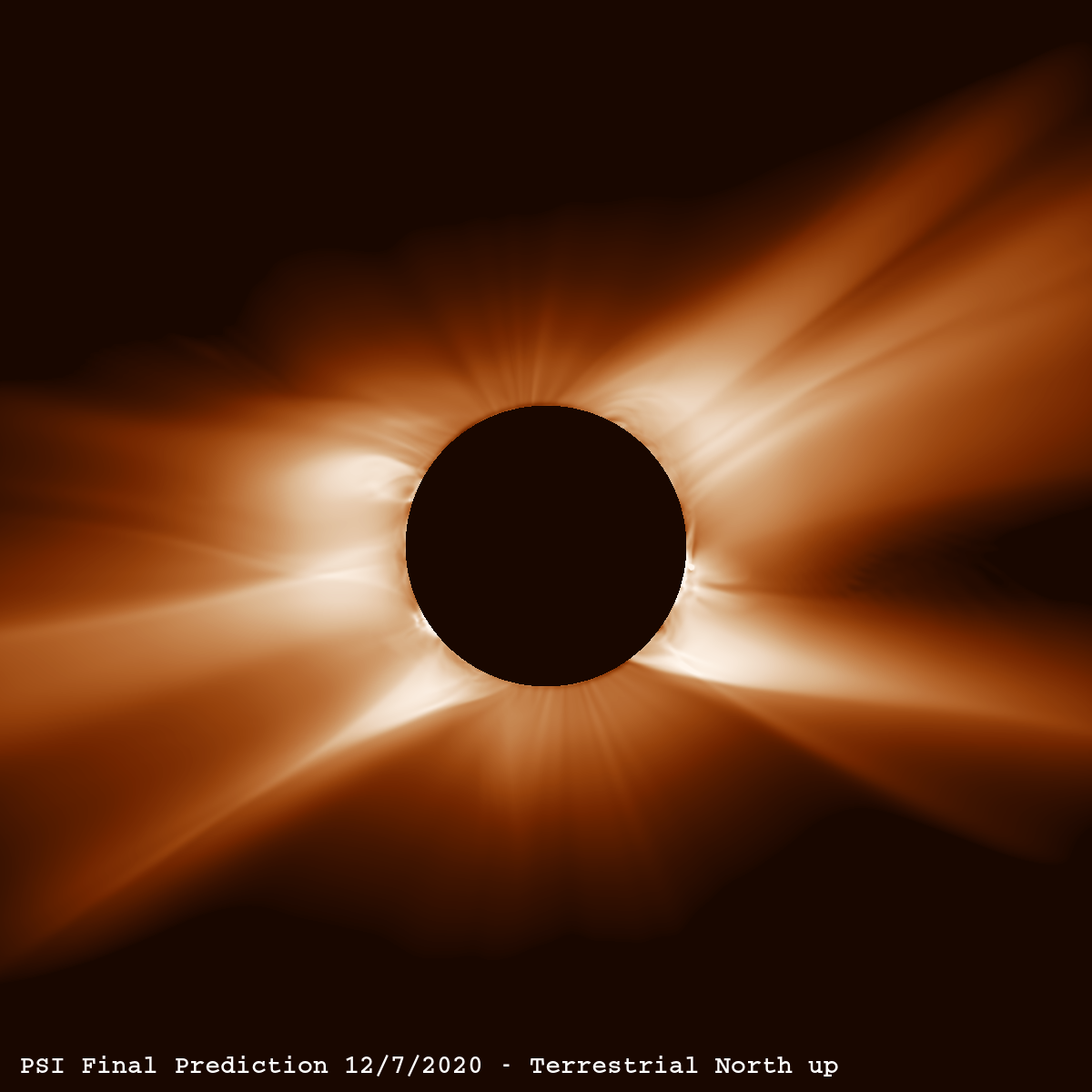
Polarized Brightness
(Wavelet Filtered)
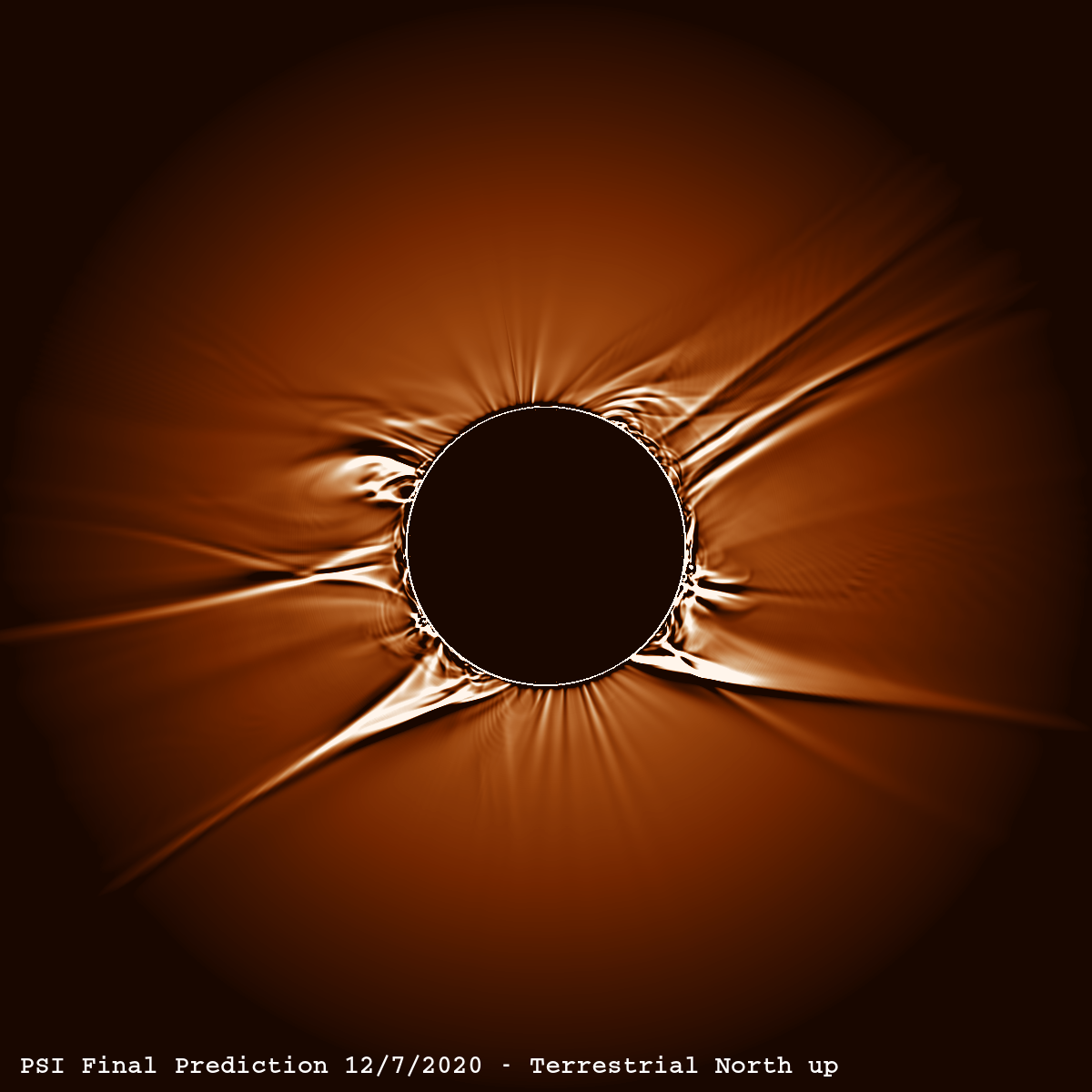

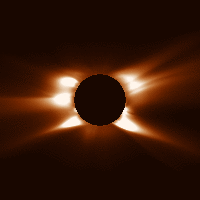 Polarized Brightness for the December 14, 2020 Total Solar Eclipse
Polarized Brightness for the December 14, 2020 Total Solar Eclipse